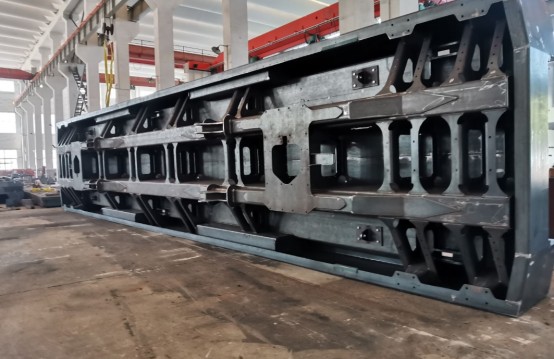This steel base chassis weighs 11 tons, the material is mainly used BT750L, NM400 wear-resistant steel, and so on, to 8mm, 12mm thickness of steel plate. The main dimensions of the product: 14685*3118*1973, due to the length of the longer we choose two sets of 3000 tons of bending machine supporting molds parallel bending.

The welding requirements of this chassis are very high, and need to be strictly in accordance with the ISO 5817-C standard, all the welds need to do magnetic particle testing, and the third-party testing unit real-time tracking and inspection of the production process, to ensure that the voltage and current are strictly in accordance with the implementation of the welding WPS, and the customer to check the dimensions of each weld and the appearance of each weld after the completion of welding and grinding.

Due to the large size of the product, it is difficult to avoid deformation during the production process, for example, we encountered the side steel plate deformation amplitude exceeded the tolerance requirements, considering the fire baking will destroy the mechanical properties of the steel plate, we use customized tools to repair with hydraulic straightening.


Considering that the long time of sea transportation will lead to serious rust, we sprayed anti-rust paint on the outer layer to protect it after welding, grinding and testing.





The Undercarriage is the connecting structural member of the AGV vehicle and also has very high welding requirements, all welds are subject to strict compliance with ISO 5817-C. In order to meet the requirements, basically all welds require 3-5 weld passes, which is a huge amount of work. In addition, all welds require magnetic particle testing.

The main difficulty lies in the difficulty of welding in places such as inside corners.


Undercarriage cutting parts




